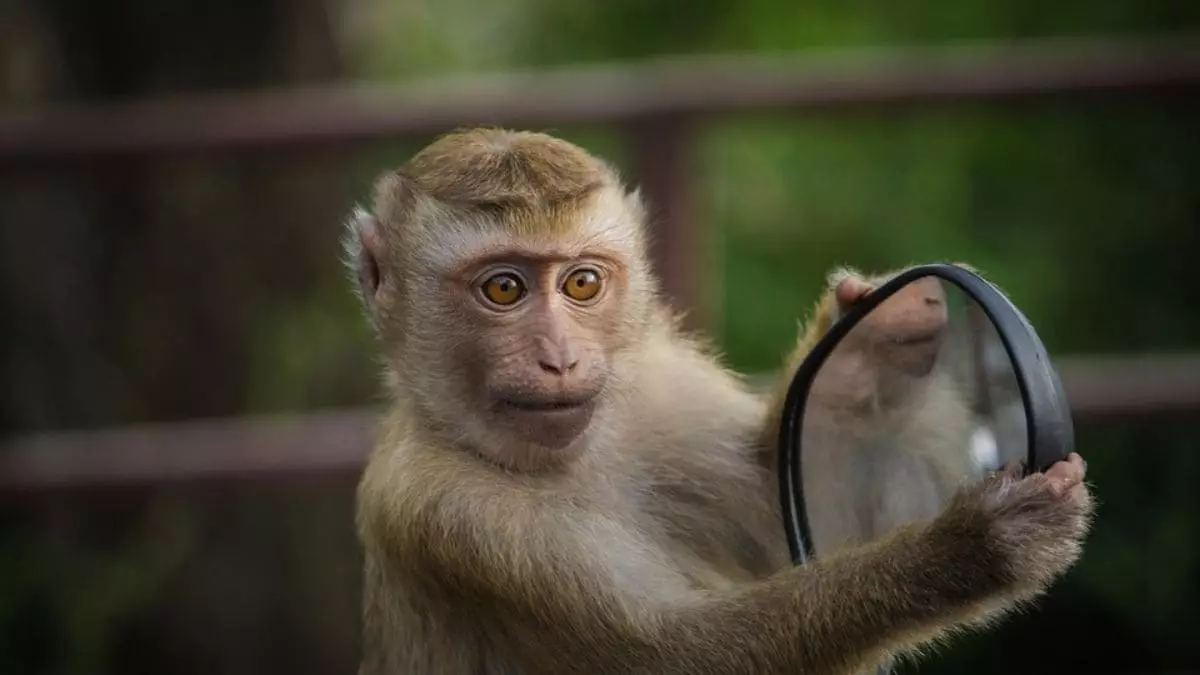The ability of animals to recognize themselves in mirrors has long been used as a metric for self-awareness, yet the findings from recent studies on baboons challenge our understanding of this cognitive trait. Baboons, living in their natural environment, have shown human-like curiosity when faced with their reflections but do not exhibit signs of self-recognition. This raises profound questions about the evolution of self-awareness across different species and whether it is a trait that develops inherently over time or through specific experiences.
The concept is not merely a matter of scientific curiosity; it underscores deeper philosophical questions about the nature of consciousness itself. Previous studies have demonstrated varying degrees of self-awareness in several species, including chimpanzees, dolphins, and elephants, leading researchers to define self-awareness as either an innate feature or a learned skill. The implications of these distinctions could reshape how we understand cognition in animals.
Research conducted at Tsaobis Nature Park in Namibia provided a fascinating glimpse into the behavior of chacma baboons (Papio ursinus). This five-month study utilized large mirrors positioned near water sources where the baboons would naturally congregate. Researchers aimed to ascertain whether these primates could connect their reflections to their physical bodies by using a laser dot to test their reactions to stimuli located on their own faces.
Results from the study revealed that while a significant number of baboons reacted to laser dots on their limbs—64% of those tested making contact—only a solitary baboon (1 out of 51) responded when the dot was placed on its face or ear in front of the mirror. This stark contrast in behavior illustrates a striking distinction between how these animals perceive themselves versus external marks on other body parts.
Alecia Carter, an evolutionary anthropologist involved in the research, emphasized the intricacies of self-awareness, highlighting that assessing this trait in animals is a multifaceted challenge. Traditional tests like the mirror mark test have shown varying degrees of success across species with some, such as certain trained rhesus monkeys, demonstrating self-exploration behaviors. In stark contrast, baboons failed to exhibit similar responses when it came to recognizing their own reflection.
Masanori Kohda, an animal sociologist, provided additional insights suggesting that the baboons may not perceive the laser dot as something affixed to their own bodies, speculating that it could be viewed as an external mark on the mirror itself. Such interpretations reveal that self-awareness might not just depend on cognitive ability, but also on the perceptual framework through which animals view their world.
The observations regarding baboons point to a larger conversation concerning how we classify self-awareness. Psychologist Lindsay Murray noted that the development of self-awareness in humans is neither immediate nor uniform; most children do not pass mirror tests until after reaching the age of two. This suggests a gradual evolution of cognitive capability rather than a set endpoint, proposing that self-awareness could exist on a continuum.
The findings observed in baboons further illustrate that self-recognition may not be a universally needed trait for survival, especially in complex social animals like baboons that thrive without acknowledging their reflections. This underscores the idea that self-awareness is not necessarily a prerequisite for social functioning or survival, shaping the way researchers consider cognitive traits across the animal kingdom.
The study of self-awareness in animals, especially in baboons, compels us to question not only how we define consciousness and self-identity but also how these concepts may differ across species. While the baboons in Namibia demonstrated a fascinating curiosity towards mirrors, their failure to recognize their own reflections suggests that self-awareness could manifest divergently in different contexts. Exploring animal cognition through this lens prompts deeper inquiry into evolutionary biology, psychology, and our relationship with not just baboons, but all sentient beings. It’s essential to broaden our understanding so we can better appreciate the diverse manifestations of consciousness in the animal kingdom.



Leave a Reply